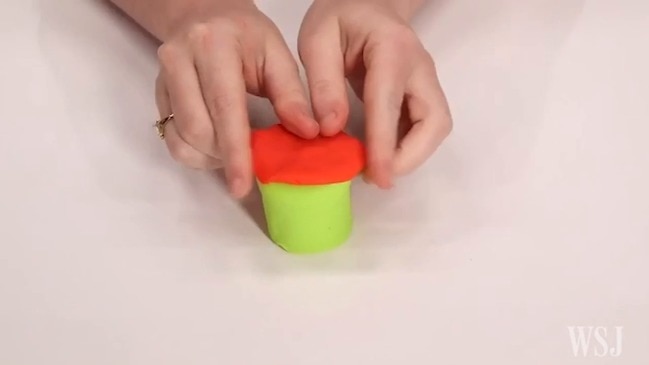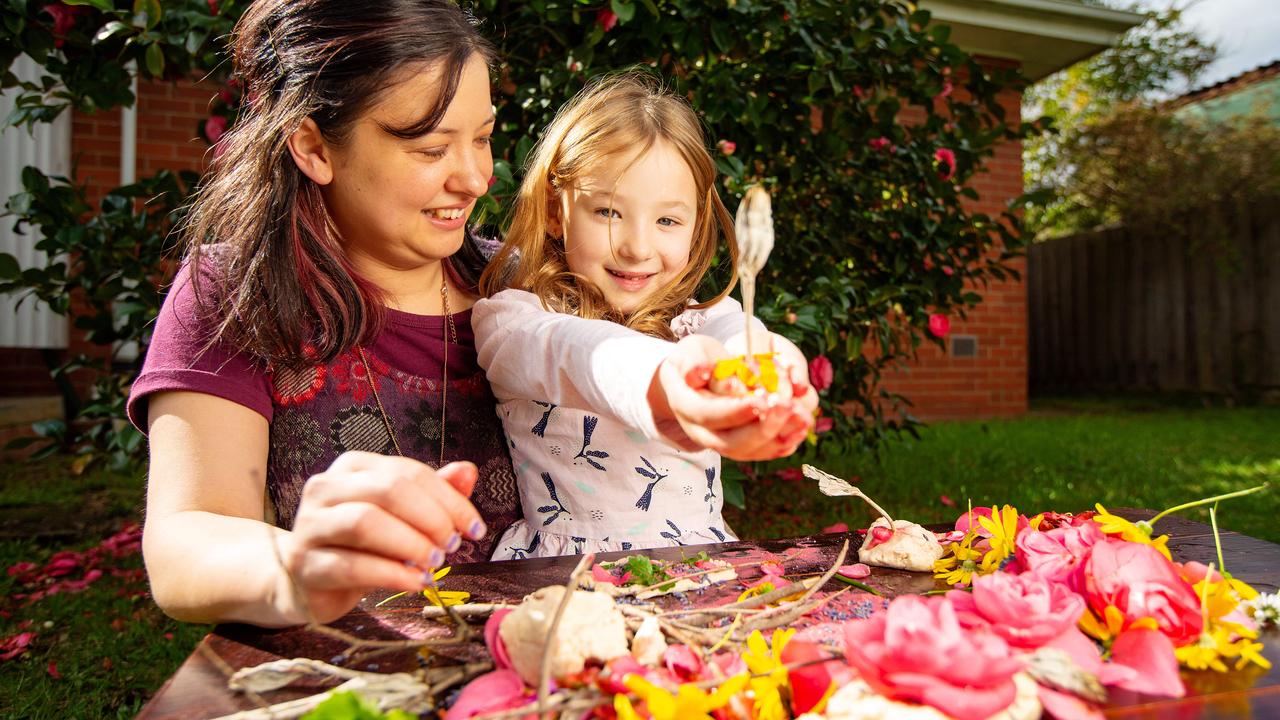How Play-Doh’s makers got themselves out of a sticky situation
By the 1950s, no one wanted to buy a special sort of dough to clean wallpaper. But some creative thinking saved the failing dough company and we all got to play with Play-Doh

READING LEVEL: GREEN
It’s the classic kid’s toy your parents either love (because it gets creative juices flowing) or hate (because the colours ALWAYS get mixed up!).
But as it turns out, Play-Doh wasn’t originally meant for your enjoyment at all.
When it was first made in the 1930s, the modelling compound* was actually sold as a wallpaper cleaner.
The product, which was only available in white at the time, was pitched to Kroger grocery stores by brothers Cleo and Noah McVicker, after the store was on the hunt for a miracle product that would help people remove the soot from coal-burning heaters off their walls.
TECHNOLOGY MOVED ON, SO DID PLAY-DOH
But as customers turned to soap and water to clean their dirty walls and more and more families relied on burning oil and gas instead of charcoal, sales decreased and the product was reinvented.
After discovering some teachers were turning to the product for children to play with, the founders realised it had potential in a very different way and it was reworked and marketed to schools in the 1950s.
To state the obvious, it was popular, and by 1965, the product was available in tubs of a variety of colours we find in toy stores today.

DON’T SCRUB THE WALLS WITH IT
But before you start cleaning the house with leftover bits found in the bottom of your toy box, sadly we can’t use it as a cleaner anymore. The detergents were removed when the product was reinvented as a children’s toy, meaning it will clean zip* from your walls now.
Cleaning up pesky crumbs from the floor at home, however … yep, we’re happy to report that still works!

MAKE IT AT HOME
It is possible to make your own version of Play-Doh, called playdough. (Dough is the proper spelling of the word dough, by the way, in case you’re wondering.)
Many preschool and primary teachers, parents and grandparents already know how. Maybe you do too and have your own favourite recipe. There are many variations.
But there’s a big divide: to cook or not to cook? Some people use recipes that combine ingredients without heating the dough, which makes it a safer activity if children are doing it. Others cook the ingredients in a saucepan on the stovetop, which means the dough combines easily to a smooth result with little kneading.

Here are just two of the many recipes for making your own playdough. Let us know how you go in the comments section below.
PLAYDOUGH (COOKED)
Ingredients
- 1 cup flour
- 250ml (1 cup) water
- 1/2 cup cooking salt
- 1 tbsp cream of tartar
- 60ml (1 tbsp) vegetable oil
- food colouring
Method
- Mix the flour, water, salt and cream of tartar in a saucepan over medium heat until thick.
- Allow the mixture to cool and then add the oil and knead over a floured cutting board or similar.
- Divide this blob evenly into as many colours as you’d like to make.
- Add food colouring to each ball until it is the colour you like.
PLAYDOUGH (UNCOOKED)
Ingredients
- 1 cup salt
- 3 cups plain flour
- 60ml (1 tbsp) vegetable oil
- food colouring
- 250ml (1 cup) water
Method
- Mix the salt and flour then add oil.
- Add the food colouring to the water.
- Slowly add the water to the mixture until the desired consistency is reached.
- The more you knead the better the texture will be so really get into it!
This article and recipes originally appeared on Kidspot and have been republished here with permission.
GLOSSARY
- compound: mixture
- zip: zero
EXTRA READING
Australia celebrates fairy bread’s 90th birthday
Hip hop makes cheese taste great
Aussie straw art given a Japanese twist
Fun fruit and vegetables strike a pose
QUICK QUIZ
- Why did people stop getting sooty wallpaper?
- When did the company begin marketing it to schools?
- What does Play-Doh pick up if you drop it on the floor?
- Name one advantage and one disadvantage of the cooked playdough recipe.
- What extra ingredient does the cooked playdough recipe have?
LISTEN TO THIS STORY
CLASSROOM ACTIVITIES
1. Target your audience
Advertising is best aimed at the people most likely to buy your product. When ‘Play-Doh’ (although not likely called that) was first marketed, it was as a wall cleaner. When it was remarketed, it was pitched to teachers for use in schools. And finally, it is now aimed at children (in the hope they will nag their parents or carers to buy it for them).
Work with two other people to create three A5-size pamphlet advertisements for this product. Each person can concentrate on one advertisement.
- Advertisement One – market the product as a cleaning product.
- Advertisement Two – market the product to teachers, schools and kindergartens.
- Advertisement Three – market the product to children.
For each advertisement consider who your audience is, what they will be looking for in this type of product, what aspects of Play-Doh will be significant to highlight for each, what should it be called, what sort of colour/design will attract people from this demographic.
Time: allow 30 minutes to complete this activity
Curriculum Links: English, The Arts – Visual & Media Arts, Personal and Social Capabilities, Critical and Creative thinking
2. Extension
Choose one of the above recipes or use your own and make some playdough for you and your classmates to play with. Organise yourself into a small group (4-6 people, although this could be done as a class too). As a group create a scene made completely of playdough. Firstly, decide on a theme for your scene (For example, a day at the beach, playground mayhem, classroom antics, football fun). Within your group organise what parts of the scene each member will make and set about creating it. Make your creations as detailed as possible, and try to make them to scale. You can use lots of different coloured playdough or create your whole scene in one colour.
If you have playdough tools you can use those to help you or you can just model with your hands.
When you have finished take a photo of your work to remember it. Then squish your playdough back into a ball and store it in an airtight container so you can make something else another time.
Time: allow 60 minutes to complete this activity
Curriculum Links: English, The Arts – Visual Arts, Critical and Creative Thinking
VCOP ACTIVITY
With a partner see if you can identify all the doing words/verbs in this text. Highlight them in yellow and then make a list of them all down your page. Now see if you and your partner can come up with a synonym for the chosen verb. Make sure it still makes sense in the context it was taken from.
Try to replace some of the original verbs with your synonyms and discuss if any are better and why.
HAVE YOUR SAY: Do you prefer Play-Doh or homemade playdough? Do you still play with it now you’re older?
No one-word answers. Use full sentences to explain your thinking. No comments will be published until approved by editors.


